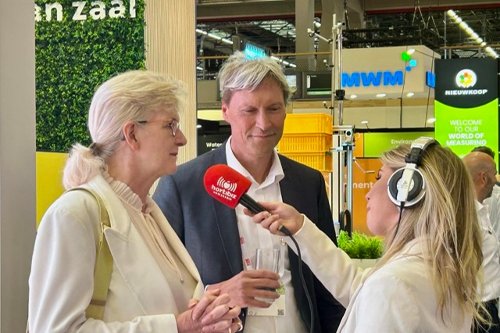Hemp for the Champ: The use of medical cannabis in sports recovery
Added on 27 September 2024

There is no doubt that sports are opening up massive opportunities for the medical cannabis industry, specifically in CBD. With regulations loosening up and big names backing it, the sports world could be the next big frontier for CBD in both North America and Europe. The market potential is there, and the demand is growing. But even so, I feel compelled to ask a few questions : how is CBD becoming a game changer for athletes and how is the sports industry creating new pathways for CBD brands to thrive?
FourFive
Let’s take a closer look at George Kruis, a former professional rugby player whose journey into the world of medical cannabis began out of necessity. Like many athletes in high-impact sports, Kruis faced recurring injuries, particularly knee problems, during his time with England and Saracens. Over the years, traditional painkillers and anti-inflammatories began to lose their effectiveness, while their side effects became harder to manage. This is when Kruis first turned to CBD.
For Kruis, the benefits of CBD were immediate. It helped reduce inflammation, manage pain, and improve his sleep—all without the harsh side effects of traditional medication. This personal experience was the catalyst for him to explore CBD not just as a solution for his own needs but as a potential game-changer for other athletes. Teaming up with fellow rugby player Dom Day, Kruis co-founded FourFive, a wellness brand offering CBD products tailored specifically to athletes. Their goal? To create natural, effective recovery solutions that both athletes and governing bodies would accept.
But you might wonder—has this association with cannabis drawn any opposition? Interestingly, Kruis shared in an interview with the BBC that the reception has been more open than expected. “We’ve found people are actually really interested in it,” he explained. “There’s a definite lack of knowledge, but they’re not against it. If anything, people are intrigued to find out more” . This curiosity is what has driven the conversation forward, with Kruis estimating that "four or five people in every club are taking it" . For him and Day, the focus is on creating a CBD product that athletes trust and that sports governing bodies are comfortable with.
They've had to navigate anti-doping regulations carefully, of course, but Kruis emphasizes that CBD is legal in the UK and approved by the World Anti-Doping Agency (WADA). This gives them confidence to use it during the rugby season, with Kruis keeping organizations like the Rugby Football Union (RFU) and the Rugby Players' Association informed. However, the Welsh Rugby Union (WRU) has been a bit more cautious, sending out blanket warnings about certain cannabinoids being banned, without specifically addressing CBD .
Despite these regulatory nuances, the pair are optimistic about the future of CBD in sports. When asked if CBD would be used at the 2019 World Cup in Japan, Kruis responded, “You never know” . This suggests that while there's still a lot of education and clarification needed, the potential for CBD to become a mainstream part of sports recovery is very real—and growing.
What’s important to note here is that CBD has already infiltrated European sports. Athletes like Kruis and Dom Day aren’t the exceptions; they’re part of a larger shift. While organizations like WADA and other anti-doping commissions remain cautious about broader cannabis medication—largely due to concerns around THC—CBD is gaining acceptance. This cautious stance from anti-doping bodies creates a huge opportunity for entrepreneurs in the cannabis industry.
Because of this element of exclusivity—where only certain products are approved and trusted by anti-doping commissions—there’s a serious potential to make a ton of money for those who can get their CBD products fully compliant and cleared for use by athletes. If more sports organizations allow these products during the season or off-season, the brands that are able to meet those regulatory standards are going to dominate the market. Companies like Kruis and Day’s FourFive are in a prime position to capitalize on this, providing legal, effective alternatives to traditional painkillers. Essentially, the fears around THC leave a wide open market for CBD entrepreneurs to step in and supply the next generation of athlete-approved recovery solutions.
As we’ve seen, CBD is steadily making its way into the world of sports, with athletes like George Kruis and Dom Day leading the charge. But this is just the beginning. There’s still so much more to uncover about how CBD is shaping athletic recovery, the hurdles it faces with anti-doping commissions, and the massive opportunities waiting for those in the cannabis industry who can navigate this new frontier.
With that in mind, I’ll be kicking off a series of articles aimed at mapping out the current landscape of medical cannabis in sports. We’ll be digging deep—examining every corner of the "athletic CBD" space, uncovering the latest developments, and piecing together a full picture of where we are today. By turning over every nook and cranny, the goal is to not only sketch out what’s happening now but to also realistically hypothesize what could—and more importantly, what will—happen in this area in the near future. Stay tuned, because this is just the start of a much bigger conversation.
By DANIEL CIUREA
More news















